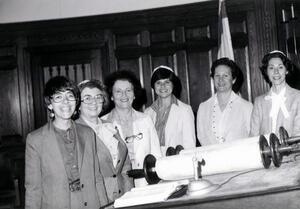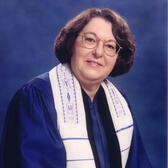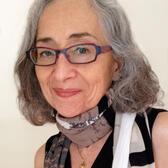Celebrating Women's History Month: Jewish Women and Religious Innovation
"I know that it is unusual, and that in the history of our people no woman except Deborah spoke in the synagogue, yet the experience did not seem strange."
- Ray Frank, “The Maiden in the Temple,” 1892
From the day in 1890 when Ray Frank publicly addressed a Kol Nidre service in Spokane, Washington, through the rise and fall of Second Wave Feminism, Jewish women across denominations have traced their journeys — metaphorically and literally — down from the balcony and onto the main stage of religious life, even onto the bimah itself.
Change, however, hasn’t come easily or overnight. Women have had to confront deeply entrenched attitudes toward a woman’s “proper place” in Judaism shared by members of their families, their communities, and religious leaders. Changes have relied on the support of male allies who championed the equal status of women and men in public religious life. The adoption of new practices, ritual, and liturgy is often incremental, reflecting shifts in women’s self-perceptions and the long creative process of wrestling with issues of Jewish law and tradition.
The transformation of American Judaism is not finished; it’s an ongoing process of renewal, creativity, and adaptation, the most recent phase in the development of Judaism over thousands of years. Today, when children in more liberal denominations may see women rabbis and cantors as the norm, when Orthodox communities are still wrestling with how or if women can be religious leaders, and when we hear concerns about the “feminization” of Jewish life, it’s worth remembering the courage and conviction of numerous American Jewish women whose belief in themselves transformed American Judaism in the space of a few decades.
Here are a few Jewish women whose confidence and creativity expanded opportunities for women to engage in religious Jewish life.
Hadassah Blocker reflects on advocating for women's religious leadership in her synagogue and being the first woman in her synagogue to chant Haftorah.
Hadassah Blocker: Raised and educated in an Orthodox family of Eastern European immigrants, Hadassah Blocker was not allowed to participate publically in Jewish life as a child but was fully educated by her rabbi father. As an adult, she became an advocate for full religious participation for women in her Conservative synagogue. During a Sisterhood Shabbat service in the 1950s, Blocker read the Haftorah — a selection of texts publicly read in synagogue each Shabbat, traditionally by a man. Blocker mesmerized the congregation and took on the responsibility of teaching other women to read Haftarah as well. She was eventually celebrated as a bat mitzvah by her rabbi. Listen to Blocker’s reflections on advocating for women’s religious leadership in her synagogue.
Sally Priesand: America’s first female rabbi, Sally Priesand was ordained in Cincinnati on June 3,1972 by the Hebrew Union College-Jewish Institute of Religion, the Reform Jewish seminary. By the age of 16, Priesand already knew that she wanted to be a rabbi and was encouraged by her parents to pursue her dream. Initially, the seminary responded equivocally to her expressions of interest in the rabbinate but accepted her as a “special student” in the undergraduate program. Four years later, with the support of the seminary president, Dr. Nelson Glueck, Priesand celebrated her acceptance to the rabbinical academy. Now retired after more than 25 years as the rabbi of Monmouth Reform Temple in Tinton Falls, New Jersey, Priesand says that she never considered herself a pioneer for women’s rights within Judaism. She simply knew from an early age that she wanted to be a rabbi and felt called to the task of being a spiritual leader. Learn more about Priesand’s life journey in Jewish Women and the Feminist Revolution.
Marcia Falk: A highly acclaimed scholar, poet, and translator, Marcia Falk is best known by many for her non-hierarchical, gender-inclusive liturgy. Her groundbreaking prayer book, The Book of Blessings: New Jewish Prayers for Daily Life, the Sabbath, and the New Moon Festival — a collection of Jewish blessings, poems and meditations in Hebrew and English with a feminist orientation — was published in 1996 after 13 years of research and writing. Long awaited in many sectors of the Jewish community, The Book of Blessings had its genesis in a moment of personal courage. In 1983, at the National Havurah Institute in Princeton, New Jersey, Falk acquiesced, with uncertainty and trepidation, to write and use her own non-traditional blessings for a havdalah ritual marking the end of the Sabbath. Recited before a community of 300 Jews of almost every religious persuasion, Falk had no idea how her new blessings would be received. To her amazement, the community responded, “Amen.” Learn more about Marcia Falk’s spiritual journey in Jewish Women and the Feminist Revolution.


![Hadassah Blocker photo - image [media] Hadassah Blocker photo - image [media]](/sites/default/files/styles/scale_crop_168x168/public/mediaobjects/blocker.jpg?itok=sgvxHRCb)



